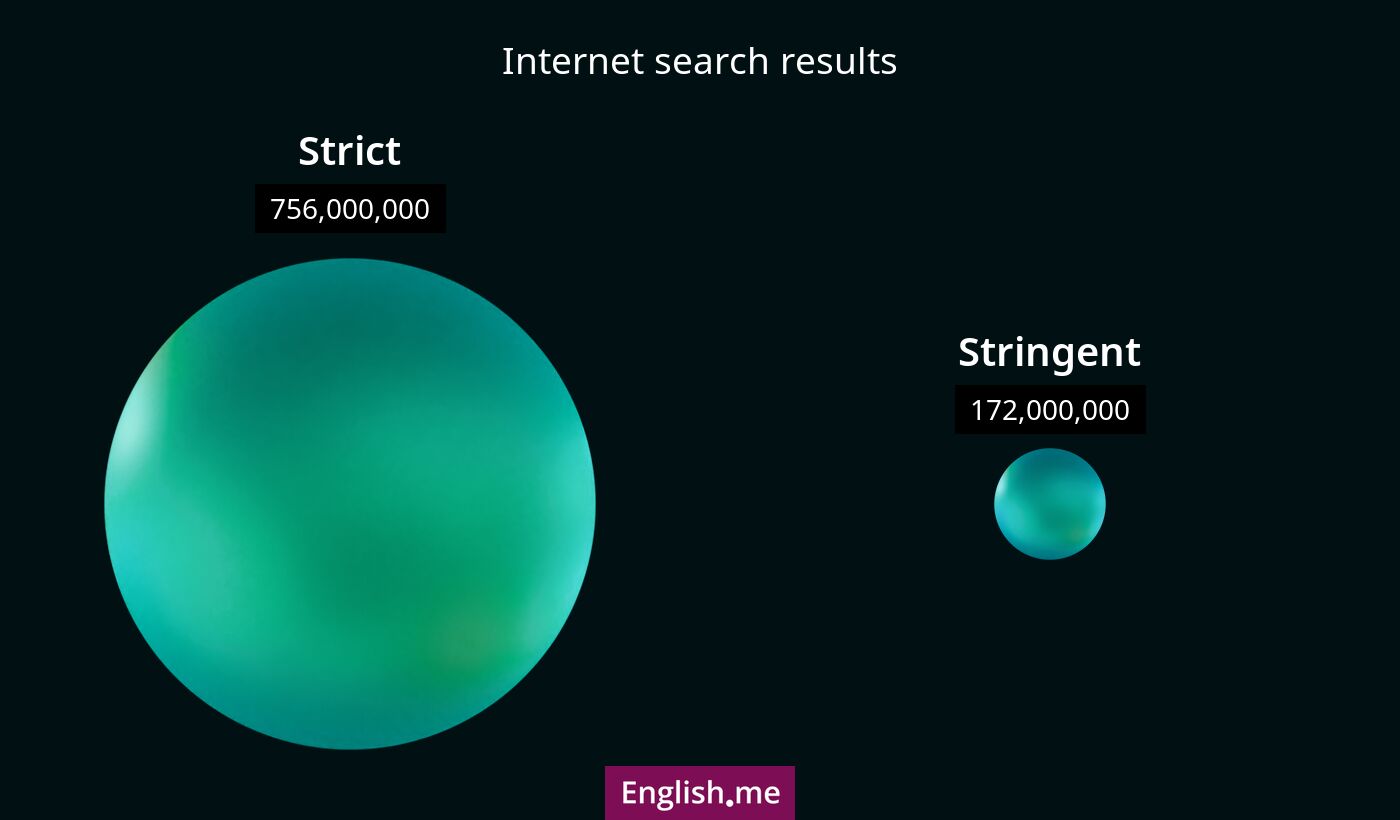Tight terms: comparing "strict" and "stringent"
Reviewed and edited by  Lloyd Cooper 24/11/2024, 08:06
Lloyd Cooper 24/11/2024, 08:06
English.me team member

 What is similar?
What is similar?
Both "strict" and "stringent" refer to something that is enforced with firmness, precision, or rigor. They often describe rules, laws, or measures that are rigidly adhered to or uncompromising.
 What is different?
What is different?
While "strict" can apply to people, rules, or standards and emphasizes adherence or discipline, "stringent" typically applies to rules, regulations, or criteria, highlighting their severity or strictness in enforcement.
 Which one is more common?
Which one is more common?

 Examples of usage
Examples of usage
Strict- The teacher was strict about homework deadlines.
- His parents set strict boundaries regarding curfews.
- The diet plan includes strict calorie limits.
- The new emissions regulations are more stringent.
- Stringent security measures were implemented at the event.
- The company must comply with stringent financial standards.

 English
English español
español française
française italiano
italiano deutsche
deutsche 日本語
日本語 polski
polski česky
česky svenska
svenska Türkçe
Türkçe Nederlands
Nederlands